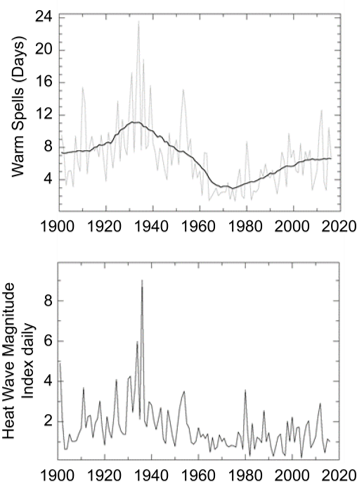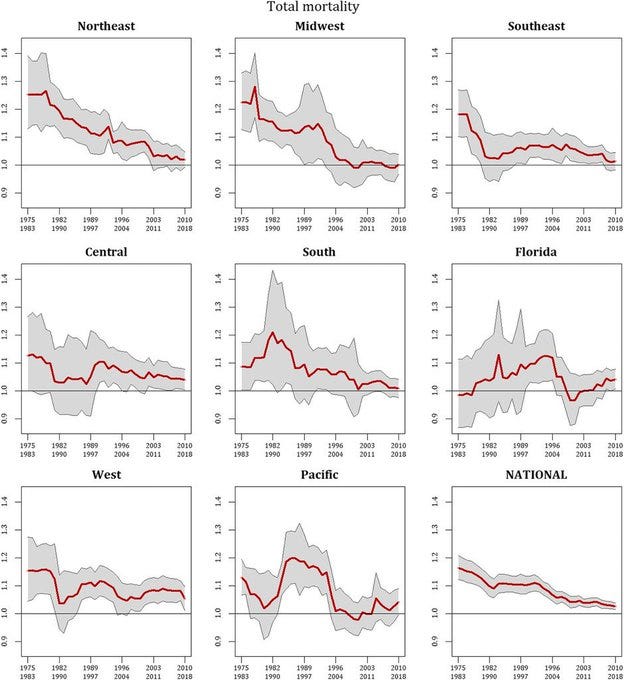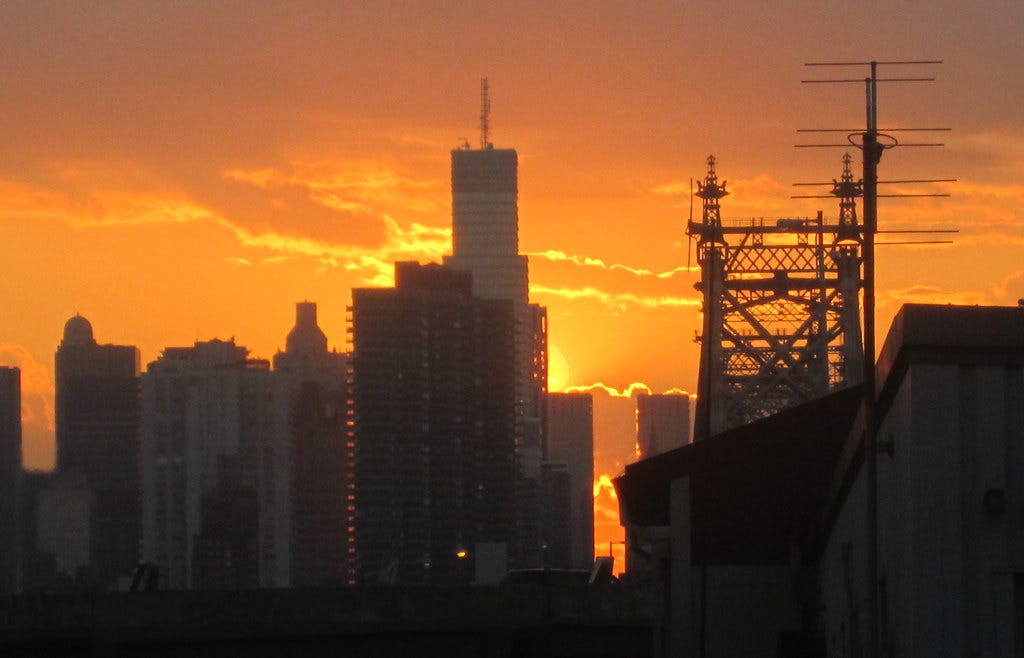SERIES: What the media won't tell you about . . . U.S. heat waves
Let's take a look at what the IPCC and official data really say
It’s hot. Real hot. Heat waves in the United States surely must be the most visible and impactful sign of human caused climate change, right? Well, actually no. Let’s take a look at what the U.S. National Climate Assessment and the Intergovernmental Panel on Climate Change say about heat waves in the United States. What they say may surprise you.
Before proceeding, let me emphasize that human-caused climate change is real and significant. Aggressive policies focused on both adaptation and mitigation make very good sense. So too does being accurate about current scientific understandings. The importance of climate change does not mean that we can ignore scientific integrity — actually the opposite, it makes it all the more important. So let’s take a close look at recent assessment reports and what they say about U.S. heat waves.
The figure below comes out of the most recent U.S. National Climate Assessment (NCA). It shows the frequency (top) and intensity (bottom) of heat waves in the U.S. since 1900. The bottom figure is actually based on a paper that I co-authored in 1999, which serves as the basis for an official indicator of climate change used by the Environmental Protection Agency.

There are a few things that jump out from these figures. One is that heat waves of recent decades have not reached levels seen in the 1930s, either in their frequency or intensity. The NCA observed that the IPCC (AR5) concluded that “it is very likely that human influence has contributed to the observed changes in frequency and intensity of temperature extremes on the global scale since the mid-20th century.” But at the same time, the NCA also concluded,
In general, however, results for the contiguous United States are not as compelling as for global land areas, in part because detection of changes in U.S. regional temperature extremes is affected by extreme temperature in the 1930s.
The more recent IPCC AR6 concurred. The complex figure below (which I consolidated from the even more complex IPCC AR6 Figure 11.4) indicates low confidence (~20%) for the detection of trends in extreme heat and the attribution of those trends to human causes for both central and eastern North America (CNA and ENA). In western North American (WNA) detection is judged likely (>66%) but with medium confidence in attribution.

The extreme temperatures of 1930s present a challenge for the detection and attribution of trends in heat waves in the United States. That means that consumers of climate reporting need to have their antennae up when reading about heat waves. It is true that if analysis of data begins in the 1960s, then an increase in heat waves can be shown. However, if the data analyses begins before the 1930s then there is no upwards trend, and a case can even be made for a decline. It is a fertile field for cherry pickers.
Even though U.S. heat waves have increased since the 1960s, societal vulnerability has decreased over that time. The figure below presents mortality risk in “extreme heat events” across the U.S. since the 1970s, showing an overall decline. This is good news, because it shows that the climate can become more extreme, but society has significant adaptive capacity.

Make no mistake, looking to the future, the IPCC projects an increase in heat waves around the world, including in the United States. Here is what the IPCC projects for the future:
In summary, it is virtually certain that further increases in the intensity and frequency of hot extremes, and decreases in the intensity and frequency of cold extremes, will occur throughout the 21st century and around the world. It is virtually certain that the number of hot days and hot nights and the length, frequency, and/or intensity of warm spells or heatwaves compared to 1995–2014 will increase over most land areas. In most regions, changes in the magnitude of temperature extremes are proportional to global warming levels (high confidence).
How bad things get is a function of how quickly mitigation occurs. Achieving net-zero carbon dioxide is thus not about the weather this year or next, but about what happens later this century.
But regardless how fast we achieve net-zero carbon dioxide, there is good reason to believe that the societal impacts of extreme heat are manageable, and across different scenarios. For instance, according to the World Health Organization, even with increasing heat waves, mortality does not have to increase. Assuming adaptative responses (like air conditioning), the WHO concludes that future “attributable mortality is zero.” The importance of adaptation to reducing vulnerabilities to extreme heat is a robust finding across the literature.
The climate is changing, there is no doubt. In many places around the world the signal of these changes has been observed in the occurrence of heat waves. But the United States is not among those places - not yet.
But so what? If climate change is real and responding to it is important, why does it matter if we incorrectly attribute today’s weather to climate change? Maybe such incorrect attribution will be politically useful?
I can think of two reasons why it matters.
First, our assessment of risk can be skewed. If we think this week’s heat wave is a novel event juiced by climate change, rather than within the bounds of observed variability, then we are fooling ourselves. If electrical grids fail and people die this week, that will mean that we are not even prepared for the present. We need only look back to the 1930s to understand that we are also not prepared for the past, much less a more extreme future. Casual claims of detection and attribution can mislead.
Second, sustained support for action on climate will require also sustaining public and policy maker trust in science and scientific institutions. Claims that go well beyond scientific understandings place that trust at risk. A scientific consensus doesn’t exist only when it is politically useful — it also exists when it is politically unwelcomed. Accurately producing and reporting on scientific assessments surely helps to foster trust in experts and the institutions that they inhabit.
The scientific community and the journalists who report on its findings would do well to call things straight, rather than make a mockery of climate science by quickly claiming that every weather event that just happened was due to climate change.





It is clear from the evening news that the news media is amplifying this issue when they try to scare everyone with the weather updates over the past 24 hours. This adds to a further misunderstanding of the issue and mistrust of institutions, neither of which advances the ball. More harm then good.
I live near Kansas City. The official records for high and low temperatures by day are:
June: 0 record highs in the 2000s*, 5 record lows *2000 through 2022
July: 3 record highs, 11 record lows
August: 6 record highs, 9 record lows
September: 2 record highs, 4 record lows
Totals: 11 record highs, 29 record lows.